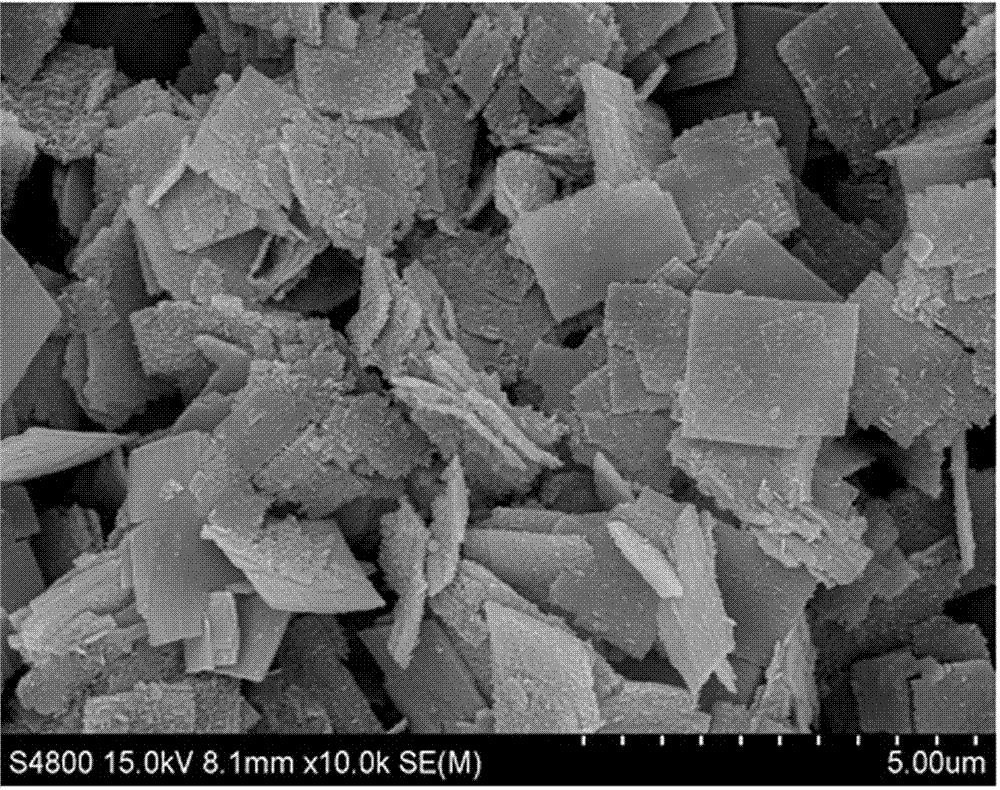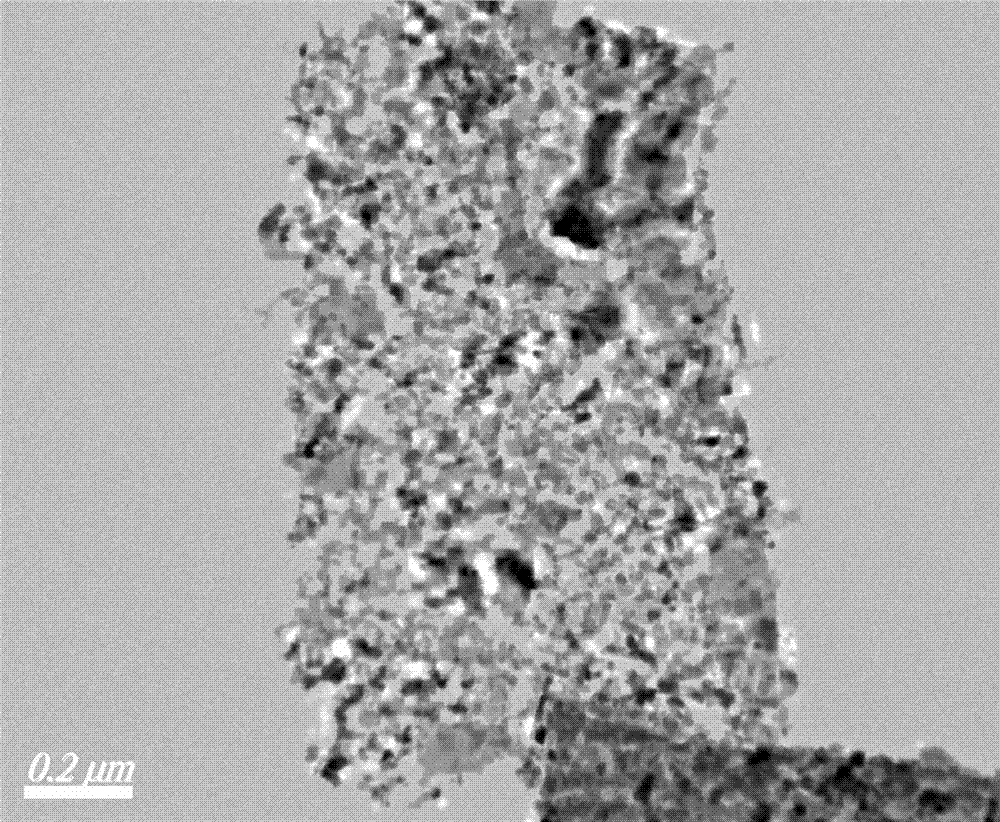Method for synthesizing copper indium diselenide nanosheet through ion exchange method
An ion exchange method, copper indium selenium technology, applied in the direction of nanotechnology, nanotechnology, chemical instruments and methods, etc., can solve problems such as difficulty in obtaining uniform CIS, and achieve simple preparation methods, good product crystallinity, yield and purity high effect
- Summary
- Abstract
- Description
- Claims
- Application Information
AI Technical Summary
Problems solved by technology
Method used
Image
Examples
Embodiment 1
[0020] (1) Use an electronic balance to weigh 0.142g (0.4mmol) indium bromide and 0.1038g (0.6mmol) sodium selenite respectively in a 25ml reaction kettle;
[0021] (2) Use a 5ml pipette, a 2ml pipette, and a 10ml pipette to measure 5ml, 2ml, and 12ml of diethylenetriamine, hydrazine hydrate, and deionized water into a 50ml beaker, and stir with a glass rod for 2 minutes to make it well mixed;
[0022] (3) Use a pipette to measure 15ml of the mixed solution in (2) into the reaction kettle in (1), and stir with a magnet with a diameter of 1cm at 600rpm for 10min to fully dissolve and mix evenly;
[0023] (4) Seal the reactor and place it in an oven at 180°C for 3 days, then cool it down to room temperature naturally, wash it with absolute ethanol for 5 times, and dry it in a vacuum oven at 60°C to obtain yellow In 2 Se 3 (DETA) 0.5 nanosheets; repeat the above process to get a sufficient amount of In 2 Se 3 (DETA) 0.5 Nanosheets;
[0024] (5) Weigh the yellow In obtained...
Embodiment 2
[0030] (1) Use an electronic balance to weigh 0.142g (0.4mmol) indium bromide and 0.1038g (0.6mmol) sodium selenite respectively in a 25ml reaction kettle;
[0031] (2) Use a 5ml pipette, a 2ml pipette, and a 10ml pipette to measure 5ml, 2ml, and 12ml of diethylenetriamine, hydrazine hydrate, and deionized water into a 50ml beaker, and stir with a glass rod for 2 minutes to make it well mixed;
[0032](3) Use a pipette to measure 15ml of the mixed solution in (2) into the reaction kettle in (1), and stir with a magnet with a diameter of 1cm at 600rpm for 10min to fully dissolve and mix evenly;
[0033] (4) Seal the reactor and place it in an oven at 180°C for 3 days, then cool it down to room temperature naturally, wash it with absolute ethanol for 5 times, and dry it in a vacuum oven at 60°C to obtain yellow In 2 Se 3 (DETA) 0.5 nanosheets; repeat the above process to get a sufficient amount of In 2 Se 3 (DETA) 0.5 Nanosheets;
[0034] (5) Weigh the yellow In obtained ...
Embodiment 3
[0036] (1) Use an electronic balance to weigh 0.142g (0.4mmol) indium bromide and 0.1038g (0.6mmol) sodium selenite respectively in a 25ml reaction kettle;
[0037] (2) Use a 5ml pipette, a 2ml pipette, and a 10ml pipette to measure 5ml, 2ml, and 12ml of diethylenetriamine, hydrazine hydrate, and deionized water into a 50ml beaker, and stir with a glass rod for 2 minutes to make it well mixed;
[0038] (3) Use a pipette to measure 15ml of the mixed solution in (2) into the reaction kettle in (1), and stir with a magnet with a diameter of 1cm at 600rpm for 10min to fully dissolve and mix evenly;
[0039] (4) Seal the reactor and place it in an oven at 180°C for 3 days, then cool it down to room temperature naturally, wash it with absolute ethanol for 5 times, and dry it in a vacuum oven at 60°C to obtain yellow In 2 Se 3 (DETA) 0.5 nanosheets; repeat the above process to get a sufficient amount of In 2 Se 3 (DETA) 0.5 Nanosheets;
[0040] (5) Weigh the yellow In obtained...
PUM
| Property | Measurement | Unit |
|---|---|---|
| energy conversion efficiency | aaaaa | aaaaa |
Abstract
Description
Claims
Application Information
 Login to View More
Login to View More - R&D
- Intellectual Property
- Life Sciences
- Materials
- Tech Scout
- Unparalleled Data Quality
- Higher Quality Content
- 60% Fewer Hallucinations
Browse by: Latest US Patents, China's latest patents, Technical Efficacy Thesaurus, Application Domain, Technology Topic, Popular Technical Reports.
© 2025 PatSnap. All rights reserved.Legal|Privacy policy|Modern Slavery Act Transparency Statement|Sitemap|About US| Contact US: help@patsnap.com



